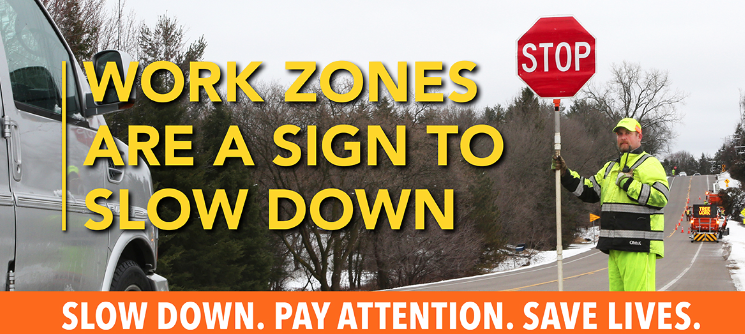Know the work zone signs: They are the metal plaques that inform and warn you, but there are other
devices and other indicators that tell you about the work underway, mark the path you should follow, and
help you navigate the work zone. Look for direction from cones, barrels, pavement markings, and other devices designed to get you safely through the work zone.
Pay attention to other drivers: It is never a good idea to ignore other drivers no matter where you’re
driving, but in work zones you need to be especially mindful of them. Roadway work zones are less forgiving
than normal stretches of highways and streets. They often have narrower lanes and no shoulders to escape
to in case you want to take evasive action.
Stay focused. Avoid distractions: Losing focus on your driving is bad in any situation, but it can prove
deadly in roadway work zones. Observing what the signs tell you, controlling your speed, steering carefully,
and keeping an eye on other drivers—all demand your full attention. Stop eating or drinking. Put down
your mobile device. Keep your focus on your driving.
Expect the unexpected: When you drive in work zones, it’s always best to prepare yourself for something unexpected, such as aggressive actions by other motorists, construction vehicles that slow down to leave the roadway and pull into the work area, dump trucks that emerge from the work area and enter your
lane up ahead, workers operating scant inches from your path, uneven pavement lanes, and loose gravel on
the road surface to name just a few. When you anticipate problems, you are better able to react to them
appropriately.
Keep your cool. Be patient: Maintain calm. Don’t get rattled by work zone situations. Always make
sure your speed is appropriate to the situation; that could be slower than the posted limit. Finally, don’t
lose your patience or your temper. If you keep your cool, you and everyone else will make it through the
work zone and arrive safely at their destinations.


